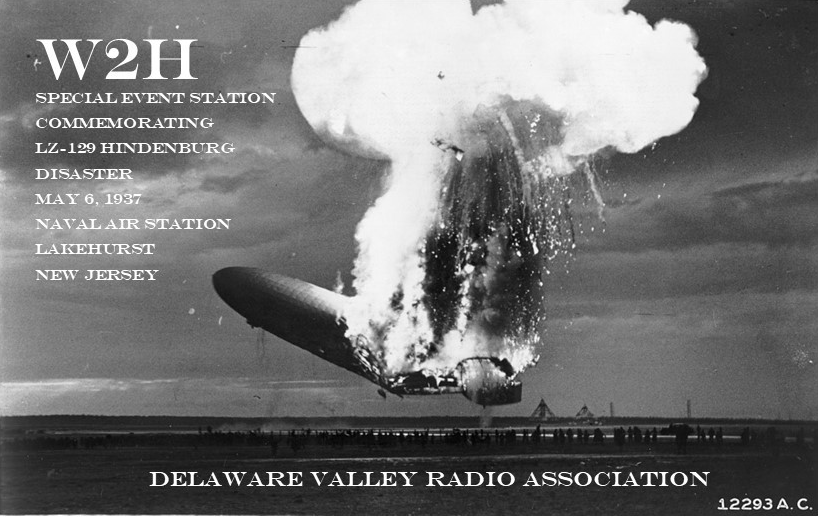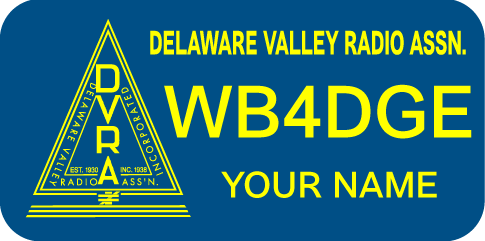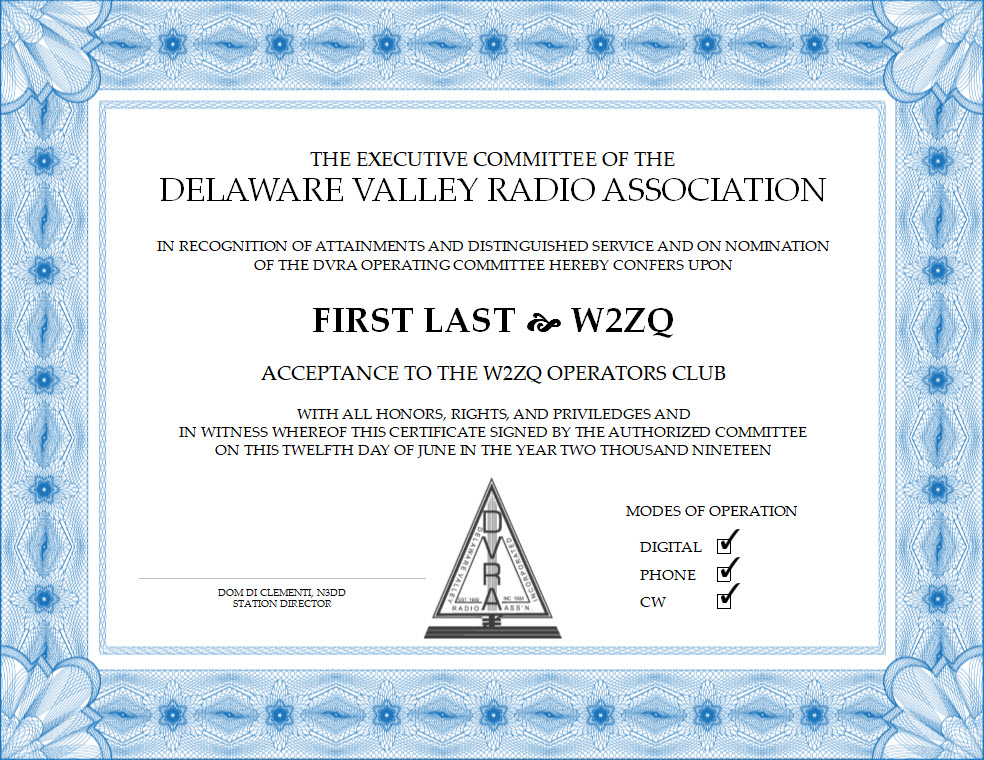Members of the DVRA, the Delaware Valley Radio Association, operated a Special Event Station to mark the 87th anniversary of the crash of the German airship Hindenburg, May 6, 1937 at Lakehurst, N.J.
Operating under the call sign W2H, the station will be on the air May 4 – 11, originating from the DVRA’s radio station in West Trenton, N.J.
A special event station is a temporary amateur radio station set up to publicize or commemorate an event. Special event stations pop up nearly every day, to honor all kinds of events: holidays, battles, anniversaries, lighthouse lightings, fund raisers and many more.
Ham radio operators were encouraged to contact the station via “HF,” or shortwave bands. Operating frequencies will vary according to atmospheric conditions. Other stations that successfully make contact with the DVRA during the event will be eligible to receive commemorative ‘QSL’ cards – specially designed postcards used to confirm contact between amateur radio stations.
DVRA member Randy Cremer WZ2V was inspired to create the event. A fan of New Jersey history, he drew from the success of other DVRA special event stations that commemorate the battles of Trenton and Princeton in 1776 and 1777 and the fictional Martian landings at Grovers Mill in 1938. Since Lakehurst is only 30 air miles from the DVRA’s facility near Mercer County Airport, it seemed a fitting way to draw attention to a New Jersey event that commanded the attention of the entire world.
Historical background
Construction of the airship that would fly under the name Hindenburg began in 1932. It made its first test flights and its first commercial flight in 1936. Hindenburg operated throughout 1936, making its first transatlantic voyage in May. It crossed the Atlantic 34 times in 1936, ferrying over 3,500 passengers and over 66,000 pounds of mail and freight. It made six trips in 1937 to various destinations.
The age of regular transatlantic airship service had seemingly arrived. But it came to a fiery end the following year. Hindenburg made six successful flights in 1937, including a round-trip to Brazil. The first flight to North America launched from Frankfurt May 3. The ship floated over New York City on its way to the landing site at the Naval Station at Lakehurst, N.J. It arrived on the afternoon of May 6, but poor weather conditions forced the crew to delay the landing. They steered the ship away from Lakehurst to wait out the weather.
By 6 p.m., conditions had improved and the ship once again made for Lakehurst. It reached mooring altitude after 7 p.m. At 7:21, the mooring ropes were dropped. Minutes later, at 7:25, crew and spectators on the ground observed fire near the aft section – most likely sparked by static electricity when the ropes made contact with the ground.
Although designed for non-flammable helium gas, the German government was unable to source enough to float the giants of its zeppelin fleet. Rather than ground the fleet – by then being used for propaganda to support the nascent Nazi party – a fatal decision was made. Operators substituted highly explosive hydrogen, more cheaply and easily made, for the safer helium.
It was over in seconds. The flames spread to the remainder of the craft as the fire breached cell after cell of hydrogen, consuming more and more explosive fuel. The crash and fire killed 35; 13 of the 36 passengers, 22 of the 61 crew and one member of the ground crew.
Images of the gigantic fireball have become an indelible icon of technology meeting accident – made even more prominent by the fact that the event was captured in photographs and on film and audiotape.
Links:







